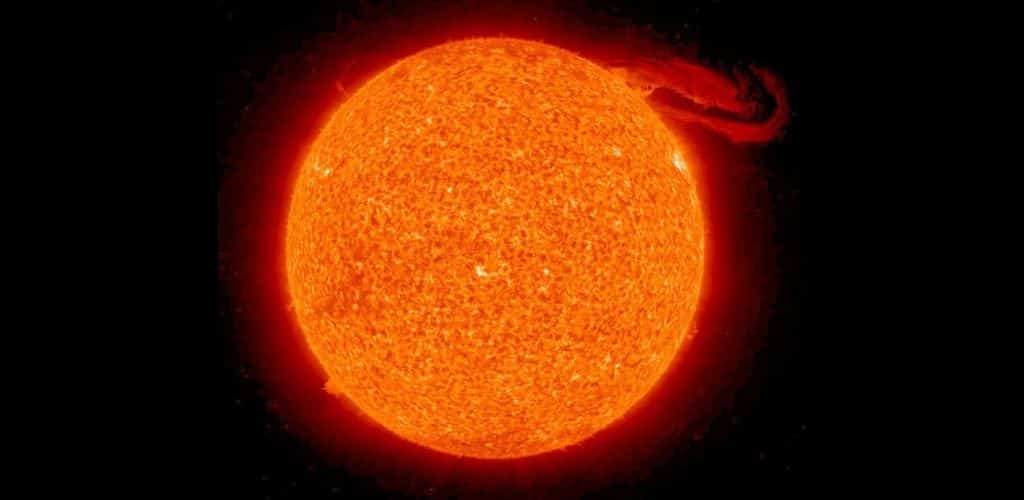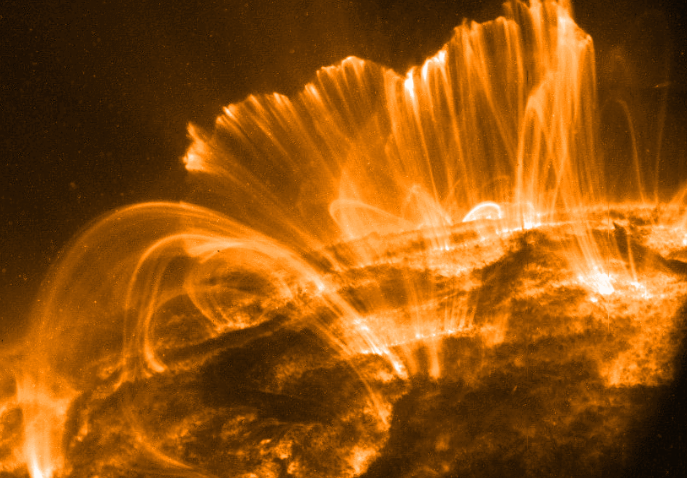
Caution !
Sunlight can damage your eyesight if you look at it with the naked eye, and cause irreversible retinal damage if it passes through binoculars, a telescope or a lens that concentrates more light than the eye. Use approved sun filters and follow the manufacturer’s instructions.

We often forget that these bright little dots in the night sky are real nuclear hells. To realize this, simply observe the sun taking, of course, all the usual precautions so as not to put your eyes in danger. If you exercise caution and follow our recommendations, observing the sun will be fascinating.
The sun is constantly changing. Darker areas, called “sunspots” move on its surface. They appear and then disappear during a cycle that lasts about 11 years. You may also be lucky enough to see on its surface brighter spots around dark spots, called “facula”, which are associated with solar flares, when the sun projects very hot matter into space.
Project the image of the sun on a cardboard
The least risky way to observe the visible surface of the sun, called the “photosphere”, is to project its image on a cardboard. For this you only need a small telescope and two pieces of square cardboard. Surround the telescope tube with one of the two cardboards to create a shadow area on the second. This will allow the projected image of the sun to appear distinctly. Point the telescope in the direction of the sun by guiding you only through the projection of the shadow of the instrument. When it is reduced to the maximum, it means that the sun is in the axis. Never try to point the sun with the naked eye !
Focus on the projected image to get a clear picture of sunspots. The middle of the morning or the end of the afternoon are the best moments to observe the sun. Mid-day heat can disrupt the atmosphere, creating turbulence, and you might see images dancing on the cardboard.
Use solar filters to observe the sun
To observe the sun, you can purchase special solar filters for your telescope. There are two types of solar filters : optical glass solar filters and “astrosolar” filters, manufactured from a metal foil. They look like aluminum foil and are designed to block dangerous rays, such as ultraviolet light. Before using one, always check that it is not cracked by holding it in front of a lighted bulb. If it is damaged, discard it. If you buy a telescope with a small filter to attach to the eyepiece, do not use it because it can burst under the effect of heat and damage your eye. There is also a new type of solar filter, called H-alpha (hydrogen-alpha), often integrated with telescopes designed for solar observation.

A solar filter makes it possible to observe solar phenomena impossible to see otherwise, such as “solar flares” which are enormous plasma jets expelled from the surface of the sun. Seen through a solar filter, the photosphere appears covered with “grains”. These grains, with an average size of 1000 km, consist of plasma cells spurting from the lower layers of the sun. The sun is therefore a dynamic and fascinating celestial object that deserves to be observed, provided of course to be extremely careful.
How to safely observe the sun
- Get ready
At first, get a blank cardboard on which will be projected the image of the sun.
- Project a shadow
You will also need to surround the eyepiece with a piece of cardboard in order to bring out the projected image of the sun.
- Beware of the risk of overheating
A small, cheap astronomical telescope is perfectly adapted to see the sun. However, be careful that the heat does not increase too much inside the tube.
- Choose the right eyepiece
Use an eyepiece at low magnification for best results. Check regularly that the instrument does not heat up too much.
- Focus
Focus to get a clear picture of sunspots and other items of the sun’s surface.
- Enjoy the result !
The telescope reflects sunlight onto the piece of white cardboard, giving you a fascinating and safe image of the sun.

Image credits
- Sun : NASA [Public domain]
- Solar flares : NASA [Public Domain], via Wikimedia Commons